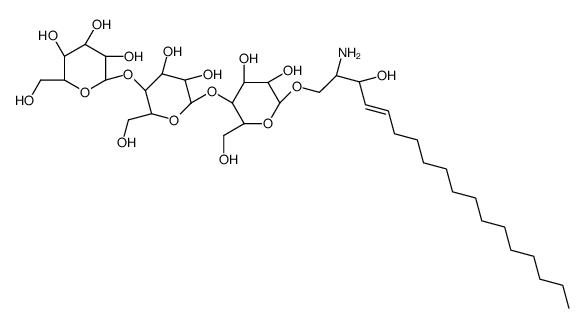LC–MS/MS analysis of plasma lyso-Gb3 in Fabry disease
Michel Boutin, René Gagnon, Pamela Lavoie, Christiane Auray-Blais
文献索引:Clin. Chim. Acta 414 , 273-80, (2012)
全文:HTML全文
摘要
Background Fabry disease is a complex, multisystemic and clinically heterogeneous disease, with elevated excretion of globotriaosylceramide (Gb3) and globotriaosylsphingosine (lyso-Gb3) accumulating in biological fluids caused by deficiency of the enzyme, lysosomal α-galactosidase A. Our aims were to propose a tandem mass spectrometry fragmentation mechanism for lyso-Gb3, to develop and validate a simple, and robust methodology for the measurement of plasma lyso-Gb3 using LC–MS/MS in large Fabry cohorts and in controls. Response to treatment was also evaluated.
相关化合物
| 结构式 | 名称/CAS号 | 分子式 | 全部文献 |
|---|---|---|---|
 |
α-D-Gal-(1→4)-β-D-Gal-(1→4)-β-D-Glc-1→O-sphingosine
CAS:126550-86-5 |
C36H67NO17 |
|
A metabolomic study reveals novel plasma lyso-Gb3 analogs as...
2013-01-01 [Curr. Med. Chem. 20(2) , 280-8, (2013)] |
|
In vivo tumor targeting using a novel intestinal pathogen-ba...
2006-07-15 [Cancer Res. 66(14) , 7230-6, (2006)] |
|
Plasma globotriaosylsphingosine as a biomarker of Fabry dise...
2010-07-01 [Mol. Genet. Metab. 100(3) , 257-61, (2010)] |
|
Quantification of the Fabry marker lysoGb3 in human plasma b...
2012-02-01 [J. Chromatogr. B. Analyt. Technol. Biomed. Life Sci. 883-884 , 128-35, (2012)] |
|
Induction of cytokines by toxins that have an identical RNA ...
2004-03-17 [Biochim. Biophys. Acta 1671(1-3) , 44-50, (2004)] |